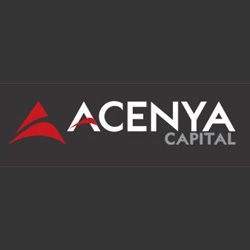Blockchain, typically perceived as a monolithic structure, is, in reality, a complex ecosystem comprised of multiple layers of technology working in tandem. However, these layers are not without their flaws; they frequently act as stopgap measures to address the scalability constraints inherent in the foundational blockchain network. These compensatory layers serve as temporary solutions, bridging the gap between the current limitations and the evolving demands of the blockchain landscape.

Why Layer-2s Matter
As the population of blockchain users continues to rise, the issue of scalability becomes increasingly urgent. In response to this challenge, Layer-2 blockchains offer a crucial solution by segregating transaction processing from the main chain. This innovative approach allows for transactions to be executed independently from the primary blockchain network, thereby relieving congestion and improving overall scalability.
By offloading transactions to secondary layers, Layer-2 blockchains effectively enhance the efficiency and throughput of the entire blockchain ecosystem, ensuring smoother operation and accommodating the growing demands of users and applications.
Reduced fees: Layer-2 protocols consolidate off-chain transactions into single Layer-1 transactions, easing the main net’s data burden while maintaining security and decentralization.
Enhanced utility: By boosting transaction throughput, Layer-2 projects enhance the user experience and focus on practicality and real-world applicability.
Layer-2 vs. SWIFT
SWIFT, introduced in 1973, revolutionized international remittance, replacing slow, courier-dependent processes prone to delays and losses.
Operating akin to SWIFT, Layer-2 blockchains optimize existing infrastructure for money transfers. While SWIFT serves as a centralized system controlled by banks, Layer-2 solutions are decentralized, offering a different paradigm for scalability.
Leading Layer-2 Blockchain Innovations
Different types of Layer-2 solutions address distinct challenges. Depending on specific blockchain needs or user preferences, one may outshine the others.
State Channels: This Layer-2 solution enables unlimited private transactions off-chain, ideal for scenarios demanding frequent bidirectional transactions, such as in-game microtransactions and live-stream donations.
Optimistic Rollups: Accelerating transaction processing, these solutions aggregate multiple off-chain transactions, presuming their validity by default, and only engage in computations if disputes arise. Optimistic roll-ups suit DApps and DeFi platforms seeking efficiency.
ZK Rollups: Offering heightened security compared to optimistic rollups, zero-knowledge rollups compress transaction data, validate transactions off-chain, and transmit the information to the main chain. Perfect for dApps and DeFi platforms, they provide improved privacy and operational efficiency.
Applications of Layer-2 Blockchains
Layer-2 protocols expand the functionalities and scalability of core blockchain networks, enabling projects to penetrate and revolutionize various industries with greater ease. These sectors include:
DeFi: Enhancing transaction speed is paramount in DeFi, particularly in trading, where timely execution dictates profitability. For instance, Loopring leverages ZK-Rollups to facilitate rapid trades and transfers for traders.
Dapps: With streamlined batch processing and improved interoperability, Dapps can handle more transactions across multiple applications. Polygon, a Layer-2 scaling solution, enables dapps to operate seamlessly across diverse blockchain platforms without compromising performance.
Micropayments: By reducing average transaction fees, Layer-2 solutions make micropayments significantly more cost-effective for users. Gaming ecosystems and live streamers can leverage this feature for monetization purposes or adopt pay-per-use models.
Conclusion
Investing in Layer-2 solutions offers a blend of potential gains and hurdles.
A shrewd investor must analyze the unique features of each Layer-2 solution, focusing particularly on their market adoption. Are they drawing genuine users—not merely speculative investors eyeing airdrops—but real users actively utilizing the platform, alongside developers actively contributing to its development?
We’re witnessing the infancy of Layer-2 adoption. Ultimately, they’ll either merge into larger entities or fade into obscurity. For most investors, dependable Layer-1 platforms like Ethereum likely remain the more secure investment option.
Learn from market wizards: Books to take your trading to the next level
















